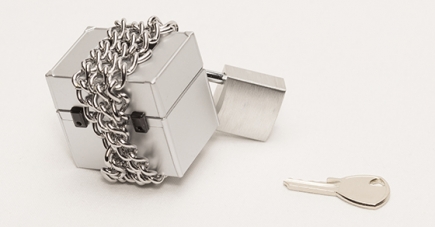Control how your charitable gifts are used by adding restrictions
If philanthropy is an important part of your estate planning legacy, consider taking steps to ensure that your donations are used to fulfill your intended charitable purposes. Outright gifts can be risky, especially large donations that will benefit a charity over a long period of time.
Even if a charity is financially sound when you make a gift, there are no guarantees it won’t suffer financial distress, file for bankruptcy protection or even cease operations down the road. The last thing you probably want is for a charity to use your gifts to pay off its creditors or for some other purpose unrelated to the mission that inspired you to give in the first place.
One way to help preserve your charitable legacy is to place restrictions on the use of your gifts. For example, you might limit the use of your funds to assisting a specific constituency or funding medical research. These restrictions can be documented in your will or charitable trust or in a written gift or endowment fund agreement.
Depending on applicable federal and state law and other factors, carefully designed restrictions can prevent your funds from being used to satisfy creditors in the event of the charity’s bankruptcy. If these restrictions are successful, the funds will continue to be used according to your charitable intent, either by the original charity (in the case of a Chapter 11 reorganization) or by an alternate charity (in the case of a Chapter 7 liquidation).
In addition to restricting your gifts, it’s a good idea to research the charities you’re considering, to ensure they’re financially stable and use their funds efficiently and effectively. One powerful research tool is the IRS’s Tax Exempt Organization Search (TEOS). TEOS provides access to information about charitable organizations, including newly filed information returns (Forms 990), IRS determination letters and eligibility to receive tax-deductible contributions. Access TEOS here: https://bit.ly/1RYWq2x
If you have questions regarding your charitable donations, please contact us.
© 2019
Charitable lead trusts offer philanthropic and family benefits
Affluent families who wish to give to charity while minimizing gift and estate taxes should consider a charitable lead trust (CLT). These trusts are most effective in a low-interest-rate environment, so conditions for taking advantage of a CLT currently are favorable. Although interest rates have crept up a bit in recent years, they remain quite low.
CLTs come in two flavors
A CLT provides a regular income stream to one or more charities during the trust term, after which the remaining assets pass to your children or other noncharitable beneficiaries.
There are two types of CLTs: 1) a charitable lead annuity trust (CLAT), which makes annual payments to charity equal to a fixed dollar amount or a fixed percentage of the trust assets’ initial value, and 2) a charitable lead unitrust (CLUT), which pays out a set percentage of the trust assets’ value, recalculated annually. Most people prefer CLATs because they provide a better opportunity to maximize the amount received by the noncharitable beneficiaries.
Typically, people establish CLATs during their lives because it allows them to lock in a favorable interest rate. Another option is a testamentary CLAT, or “T-CLAT,” which is established at death by your will or living trust.
Interest matters
Why are CLATs so effective when interest rates are low? When you fund a CLAT, you make a taxable gift equal to the initial value of the assets you contribute to the trust, less the value of all charitable interests. A charity’s interest is equal to the total payments it will receive over the trust term, discounted to present value using the Section 7520 rate, a conservative interest rate set monthly by the IRS. As of this writing, the Sec. 7520 rate has fluctuated between 2.8% and 3.4% this year.
If trust assets outperform the applicable Sec. 7520 rate (that is, the rate published in the month the trust is established), the trust will produce wealth transfer benefits. For example, if the applicable Sec. 7520 rate is 2.5% and the trust assets actually grow at a 7% rate, your noncharitable beneficiaries will receive assets well in excess of the taxable gift you report when the trust is established.
Act now
If a CLAT appeals to you, the sooner you act, the better. In a low-interest-rate environment, outperforming the Sec. 7520 rate is relatively easy, so the prospects of transferring a significant amount of wealth tax-free are good. Contact us with questions.
© 2019

Walls & Associates is a certified public accounting firm serving the needs of businesses and individuals in the tri-state area of West Virginia, Kentucky, and Ohio. We are confident that regardless of size, we can fulfill your financial and tax accounting needs – whether it is a simple individual tax return, a consolidated multi-state corporate tax return, a nonprofit tax return, or general bookkeeping.
CONTACT US
-
Milton Office Location:
Phone: 304-390-5971
1025 N. Main Street
Milton, WV 25541 -
Hamlin Office Location:
Phone: 304-824-3880
19 3rd Street
Hamlin, WV 25523
WORKING HOURS
| Monday | 8:30 am - 5:00 pm |
| Tuesday | 8:30 am - 5:00 pm |
| Wednesday | 8:30 am - 5:00 pm |
| Thursday | 8:30 am - 5:00 pm |
| Friday | 8:30 am - 5:00 pm |
| Saturday | Closed |
| Sunday | Closed |

